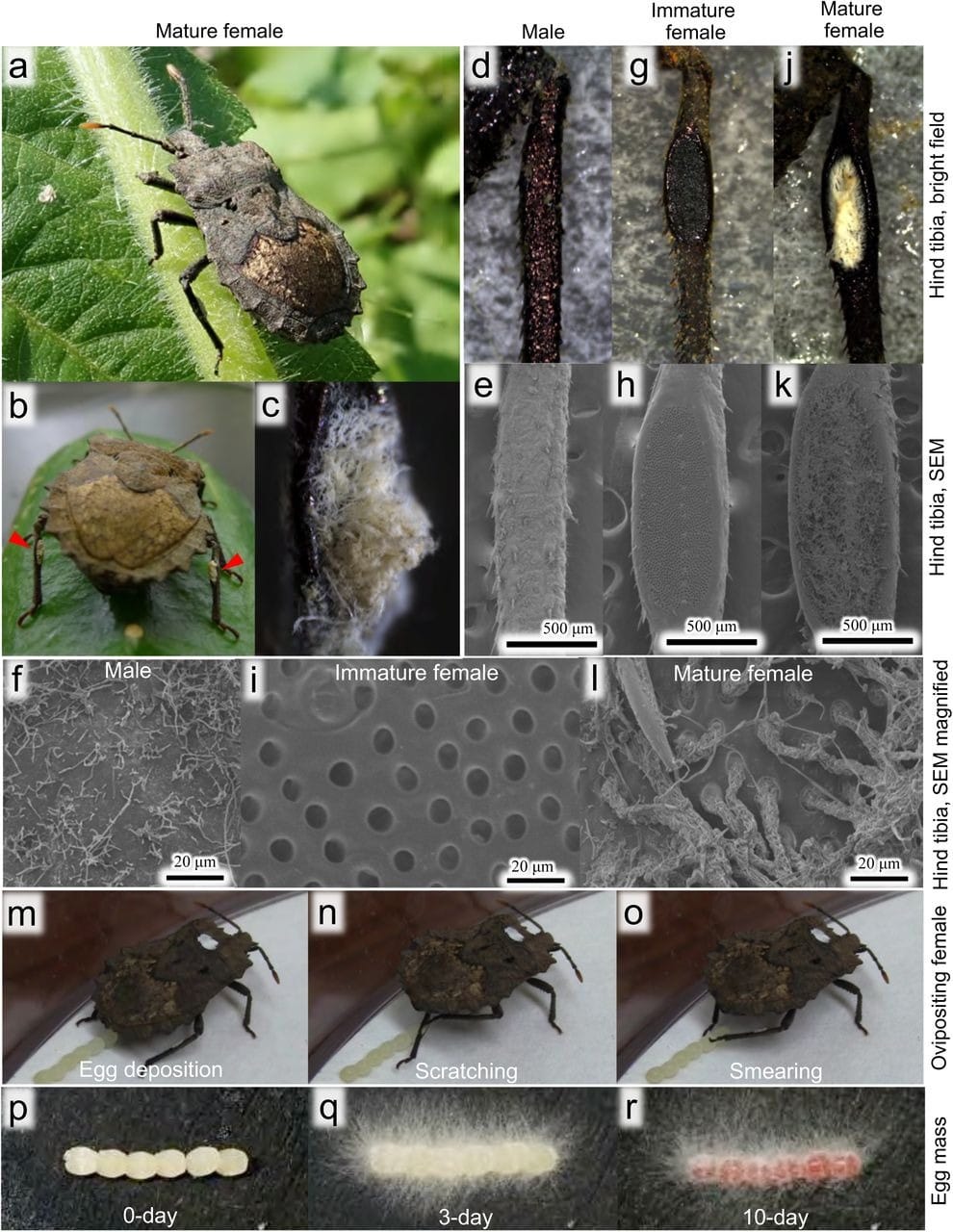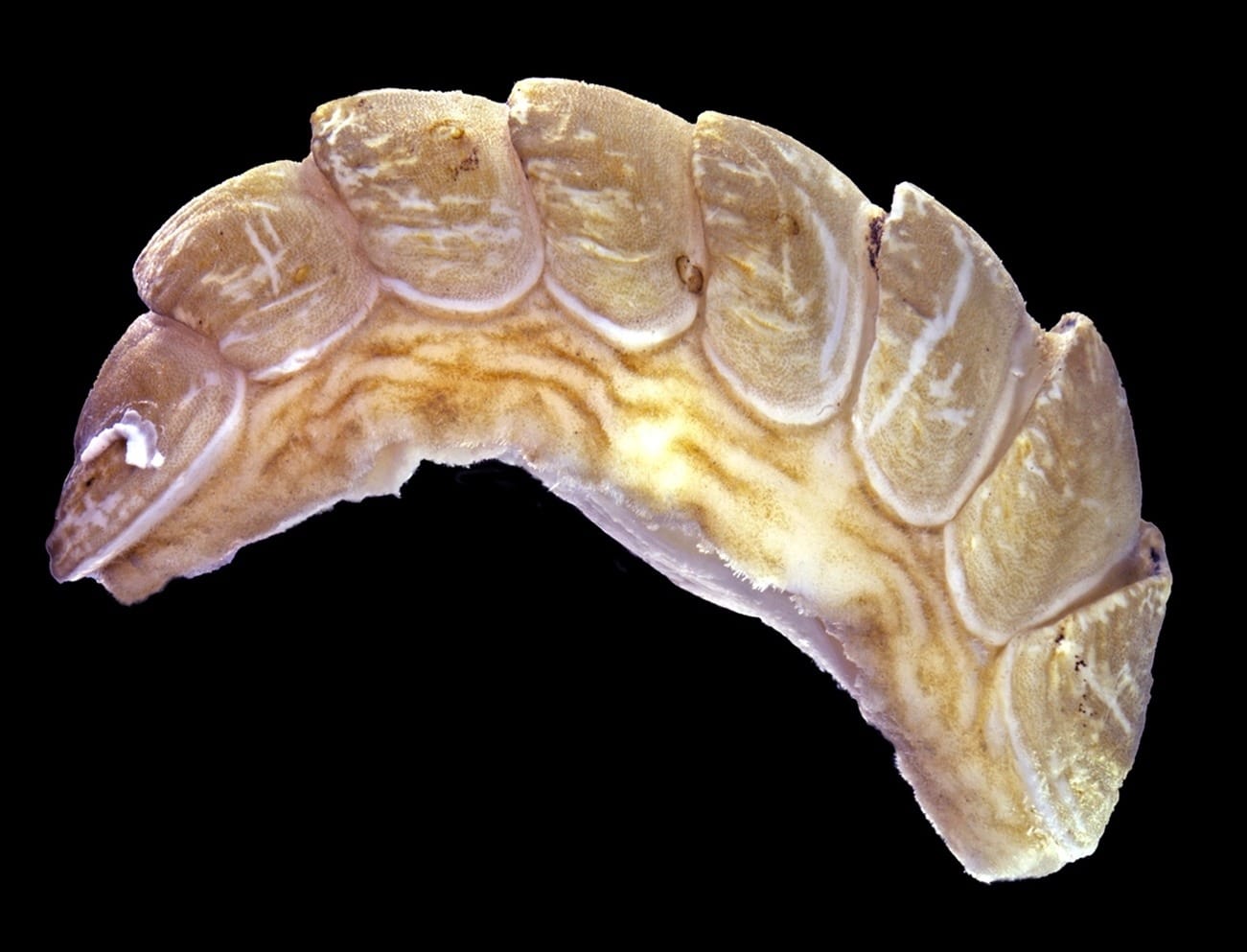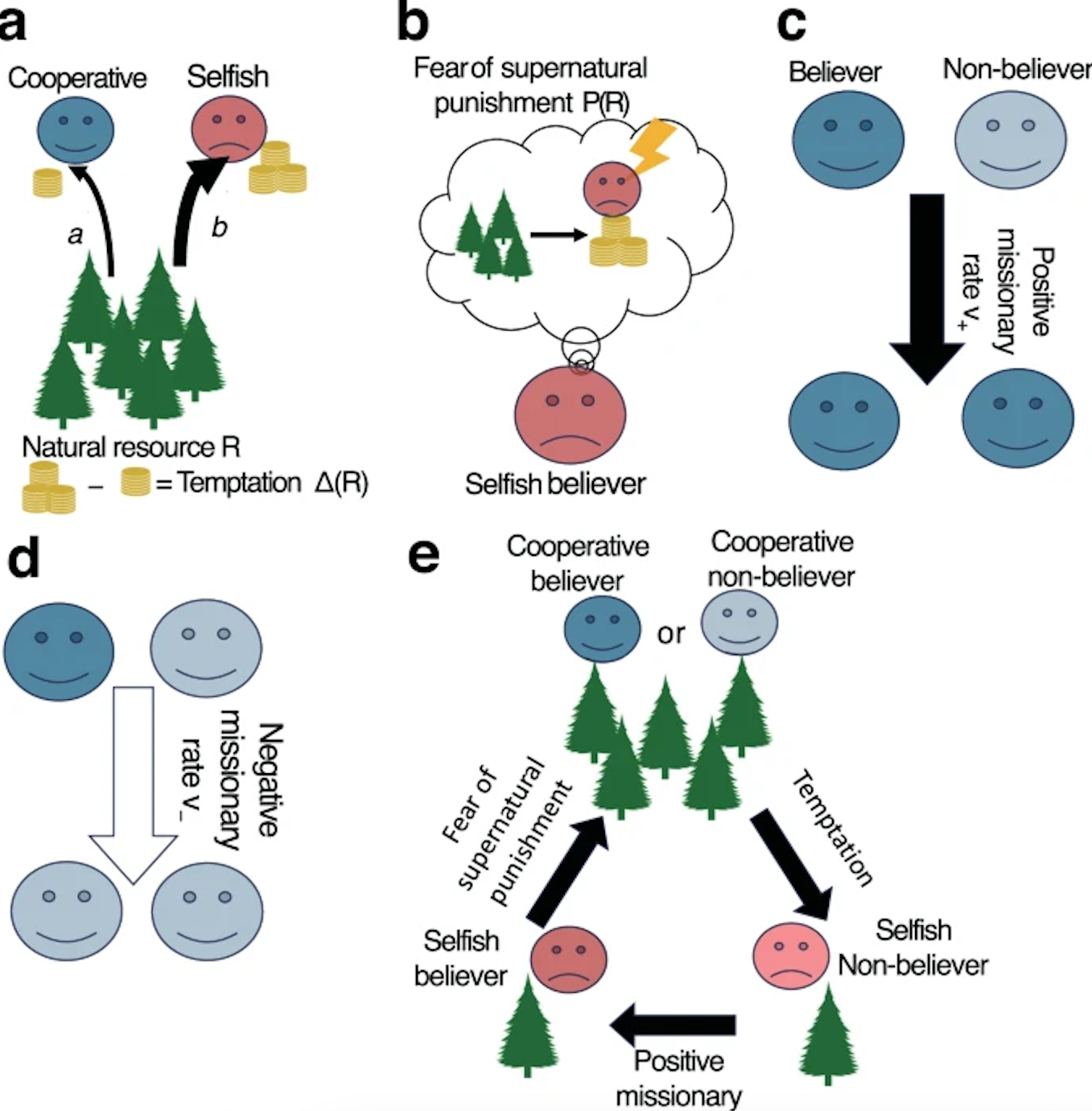
Welcome back to the Abstract! Here are the studies this week that mounted a defense, felt out of place, found new life, and resurrected the gods of yore.
First, a tale of pregnant stinkbugs, parasitic wasps, and fungi weapons that is fit for a rebooted Aesop fable. Then, a fast food stop for an errant black hole; a new cast of worms, mollusks, and “tusk-shells” from the deep sea; and a friendly reminder to REPENT, SINNERS, or suffer divine wrath.
I also wanted to give another quick shoutout to my book First Contact: The Story of Our Obsession with Aliens, which is now out in the wild. And if you’d like to keep up with news about the book, alien lore, and my other goings-on, subscribe to my personal newsletter the BeX Files.
And now, to the science!
Painting eggs (with protective fungi)
Nishino, Takanori et al. “Defensive fungal symbiosis on insect hindlegs.” Science.
For years, scientists assumed that the weird lumps on the hindlegs of some female stinkbugs were used as auditory organs to perceive sound. A new study reveals that the function of these “tympanum” organs is, in fact, way weirder: They are miniature fungi farms that the “gravid” (pregnant) females use to culture “hyphae” (fungal filaments) to grow anti-wasp coatings for their eggs.
“To address the question of the function of the tympanum, we investigated the Japanese dinidorid stinkbug Megymenum gracilicorne and discovered that this stinkbug’s hindleg organ is not auditory but a previously unknown type of symbiotic organ,” said researchers led by Takanori Nishino of the University of Tsukuba.
“We observed that the gravid females laid eggs in a row, and when each egg was deposited, the females rhythmically scratched the fungus-covered hindleg organ with the tarsal claws of the opposite hindleg and rubbed the egg surface, smearing the fungi onto the eggs,” the team said. “Within a few days, the fungal hyphae grew to cover the entire egg mass. On hatching, the hyphae attached to the body surface of newborn nymphs, although the fungi were subsequently lost as the nymphs molted and grew.”

Don’t you just love the smell of fungus-covered eggs in the morning? Probably not, and that’s the point. Parasitic wasps like to go around ovipositing (laying their young) inside the eggs of other bugs, but the team discovered they were repeatedly thwarted by the stinkbug shield.
“In the experimental arena, the female wasps approached both the fungus-removed eggs and the fungus-covered eggs,” the researchers said. “Immediately after antennal drumming on the egg surface, the female wasps only oviposited on the cleaned eggs… It is notable that wasps still approached egg masses fully covered by fungal hyphae, despite showing intense self-grooming, which suggested that the hyphae were adherent.”
That’s what these wasps get for trying to mooch off stinkbug eggs: a faceful of sticky fungal goo that’s going to take some very intense self-grooming to remove. To that end, the team concluded that “the fungi selectively cultured on the female’s hindleg organ of M. gracilicorne are transferred to eggs to act as a physical defense against parasitic wasp attack.”
As the old adage goes, never judge a stinkbug by her conspicuous tympanal organs.
In other news…
Who left a supermassive black hole all the way over here?
When stars wander too close to black holes, they are torn apart by extreme tidal forces, producing radiant light shows called tidal disruption events (TDEs). Astronomers have witnessed these events countless times near the central nucleus of distant galaxies, which are occupied by supermassive black holes, but a team has now captured an unprecedented glimpse of an “off-nuclear” TDE far from the galactic core.
The event, called AT 2024tvd, involved a black hole with a possible mass of up to 10 million Suns. While it’s a pretty typical enormous black hole, what’s weird is that it was spotted eating a star about 2,600 light years from the nucleus of a distant galaxy, which produced the unusual TDE. Scientists have seen a few dim hints of these off-nuclear events, but this is the first to be clearly captured in bright radio waves.
“AT 2024tvd is the first radio-bright, bona fide off-nuclear TDE, and it is also the TDE with the fastest evolution observed to date,” said researchers led by Itai Sfaradi of the University of California, Berkeley.
The team speculate that the black hole might have been gravitationally kicked into the galaxy after a dust-up with other, bigger black holes elsewhere. While that sounds like a tumultuous backstory, at least this black hole was able to grab a stellar bite along the way.
Here be mollusks, worms, and chitons
Meet the newest invertebrates on the deep-ocean block in a study that identified 14 previously unknown species from remote marine regions around the world. These taxonomic newcomers include the carnivorous sombrero-shaped mollusk Myonera aleutiana, the gummy-bear-esque worm Spinther bohnorum, and the aptly nicknamed “tusk shell” (it looks like a tusk) Laevidentalium wiesei.
“Despite centuries of exploration, marine invertebrate biodiversity remains notably under-described,” said researchers with the Senckenberg Ocean Species Alliance (SOSA), an international collaboration that was “founded to help meet this challenge.”

While all of the newly identified species are fascinating, I have a selfish soft spot for Ferreiraella charazata (no relation to me, or any of the two million Ferreiras in the world). This deep-sea chiton species belongs to a broader genus established by researcher A.J. Ferreira several decades ago.
The new Ferreiraella chiton was found in some sunken wood two miles under the sea and is described as having a “very large girdle” and “epibiotic tubeworms on its tail valves,” bringing extra pizazz to the family name.
Old-world solutions to new-world problems
Here’s an out-of-the-box idea to save the environment: Bring back vengeful gods and spirits. In a truly delightful study, scientists explore the benefits of perceived supernatural punishment on the preservation of natural ecosystems with mathematical game theory outlined in the following illustration:

“Japanese folklore includes episodes where spirits of nature (e.g., mountains and trees) punish or avenge people who develop or overuse natural resources,” said researchers led by Shota Shibasaki of Doshisha University. “Similarly, the Batak people of Palawan Island in the Philippines believe in the forest spirits that punish people who overexploit or waste forest resources. Itzá Maya, Guatemala, also views forest spirits as punitively protecting local forests against exploitation.”
This is the most galaxy-brained math paper I’ve ever read. Ultimately, the results suggest that “supernatural beliefs could play an important role in achieving sustainability.” So let’s break out the talismans and start casting eco-friendly spells because I, for one, welcome our divine treehugging overlords.
Thanks for reading! See you next week.


